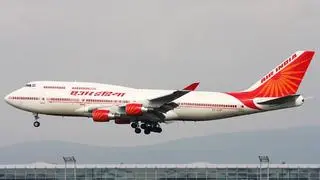Girish Linganna
Early 2000 witnessed a revolution in civil aviation in India with at least a dozen domestic airlines entering the fray. Many, like Deccan Aviation, began on a shoestring budget. It did not take long for big business houses like the UB Group to enter into the fray. However, the euphoria was short lived. The industry saw a course correction as a steep increase in ATF prices nearly crippled several airlines.
Quite a few airlines either shut down their shops or merged into bigger groups. What is ironic is the fact that while India has the potential to have several airlines, it has been unable to have the infrastructure for manufacturing commercial jets.
NAL Saras, a 14-seater aircraft was perhaps the first attempt to build a commercial carrier which received approval in 1999 by the governmentafter the Russians who were supposed to co-develop the aircraft backed out. The exercise began amidst the American sanctions post-Pokhran nuclear test. The Sarus-named after the Indian crane made its first flight on May 29, 2004. The project was abandoned in 2016 due to a lack of funds.
However, the current government has now revived the project after approving certain modifications to the cockpit and cabin formation. Saras will be used as a test aircraft for the development of Saras Mk2, a 19-seater transport aircraft. The Council of Scientific and Industrial Research (CSIR) has already started work on the design of the indigenous next-gen commuter transport aircraft, to be used for the Government’s UDAN scheme.
Saras Mk2- 7.5-ton aircraft will have an endurance of 6.1 hours with a service ceiling of 30,270ft with a max range of 728 km with a max load of 19pax. The state-owned Hindustan Aeronautics (HAL)manufactured the multi-purpose light transport aircraft — Dornier 228 aircraft. The 19-seater aircraft is currently being used by the defence forces. Recently, the Directorate General of Civil Aviation (DGCA) has given a ‘certificate of airworthiness’ to this aircraft paving the way for its civil use.
The domestic airlines in the early 2000s required small aircraft ranging between 15-seaters to 100-seaters. Experts believed that this investment would have created a market with rising number of domestic users. Currently, the country is the ninth largest civilian aviation market with a market size of $16 billion. There is a need for India to have its own aircraft. Despite the delay in entering the civil aviation sector, it has shown progress. It is estimated to take the global centre stage with Make-in-India and Atma Nirbhar Bharat initiatives.

Girish Linganna is Director, ADD Engineering Components (India) Pvt Ltd ( Subsidiary of ADD Engineering GmbH, Germany







Comments
Comments have to be in English, and in full sentences. They cannot be abusive or personal. Please abide by our community guidelines for posting your comments.
We have migrated to a new commenting platform. If you are already a registered user of TheHindu Businessline and logged in, you may continue to engage with our articles. If you do not have an account please register and login to post comments. Users can access their older comments by logging into their accounts on Vuukle.